Cervelo’s P-Series: Slowman’s Build
A few months ago I wrote about Making a Cervelo P-Series Your Own. The crux of that article was how to adjust that bike to match your fit coordinates. In today’s real world, bikes are getting more complicated and, sadly, you’re about as likely to have a good local pro bike shop as you are a video rental store. Hence my attempt to give some guidance.
That said, I really like this bike, and before I gave it back to Cervelo I wanted to try it out with equipment with which I’m more familiar. So, what you’ll see below is Slowman’s build. Here’s the P-Series the way I’d like it, if I could put all the parts on it I want. And of course I can. You and I can simply buy the frameset, for $2,500, and go to town on it.
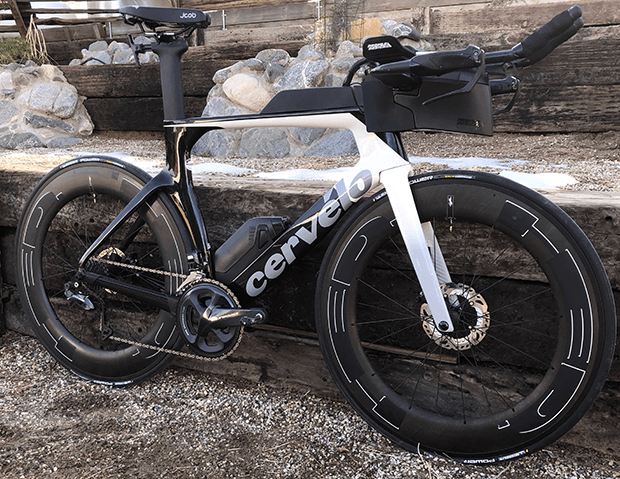
2019 was a big year for Cervelo. Not only has it gotten rave reviews for the Aspero, its gravel bike, the brand overhauled its tri bike line. The P3X and P5 Disc came out in the Spring of 2019, followed by the P-Series in the Autumn.
We wrote about the P-Series here. This bike replaces the P2 and P3, certainly the most important platform ever in the tri market.

The P-Series comes in several builds. A Shimano 105 build sells for $3,200, that’s the entry level, and next up is the Ultegra build at $4,300. These bikes feature Zipp aerobars, certainly an acceptable choice. The first electronically shifted version of the P-Series sells for $6,500 and is dominated by Vision’s products: aerobars, hydration and wheels. Nice bike.
But here’s the thing about platforms. The frameset this one replaces remained unchanged for 6 years. This P-Series frameset is quite good. I don’t see it changing for another 5 or 6 years. It’s certainly going to get offered in a number of builds over its lifetime. So I tried this one out.
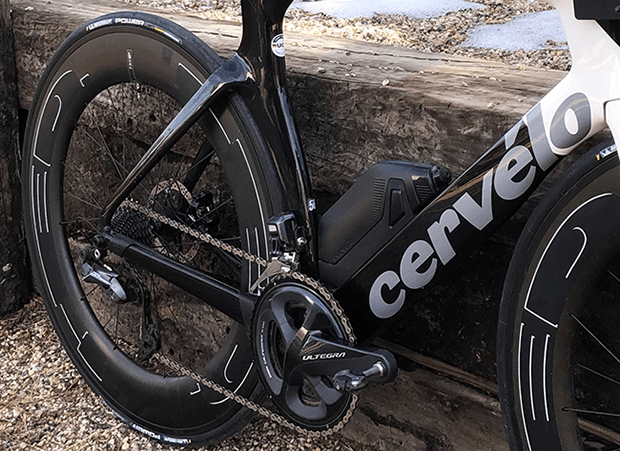
Obviously the bike as I just built it up has some pretty deep wheels on it. these are HED Jet 9s. I just pulled these off my Andean and stuck them on the Cervelo, to see what they look and ride like. Whoop whoop! Now, you might say that 9 is a mighty deep front wheel, and that’s true. But did you notice the wheels the pro men rode in Kona? I thought, when Wurf threw down that course record on a shallower front wheel year-before-last that this might be the new trend.
Nope! Nine of the top-15 in Kona this past year, and each of the top 4 finishers overall, were riding 78mm or deeper on the front. So, while I won’t ride this wheel all the time, I’ll ride it when I can get away with it. I’d certainly rather have it and not use it than need it and not have it. Only thing I’d change is that I’d ride it tubeless. I don’t have tubeless mounted on these wheels at the moment, but I could move to Schwalbe Pro Ones in 28mm – the P-Series has the clearance for that tire – and that would be my choice.
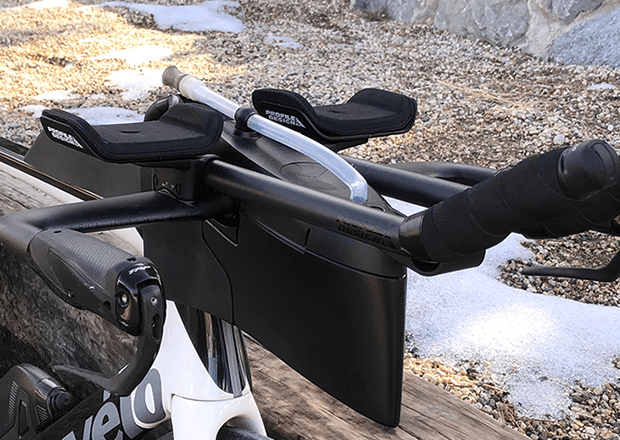
The next obvious change is the aerobar and the hydration. The bar is the Aeria Ultimate. Now, you might wonder why I’d put a bar on a bike that just got recalled. The bar on this P-Series has the replacement pursuit bar (the one that replaced the recalled bar).
Can I just say – and I’m probably going to get myself in trouble – that I have a suspicion about the Ultimate’s pursuit bar. I don’t know – I have no basis for this other than my horse sense – a contributing problem with the recalled bar is that the pursuit extensions just were long. When you put those (excellent!) TRP Di2-compatible, hydraulic, pursuit levers on there, if you crash on that set-up, or if your bike case that allows for an installed pursuit bar is abused by the airline, there’s a lot of leverage on that joint.
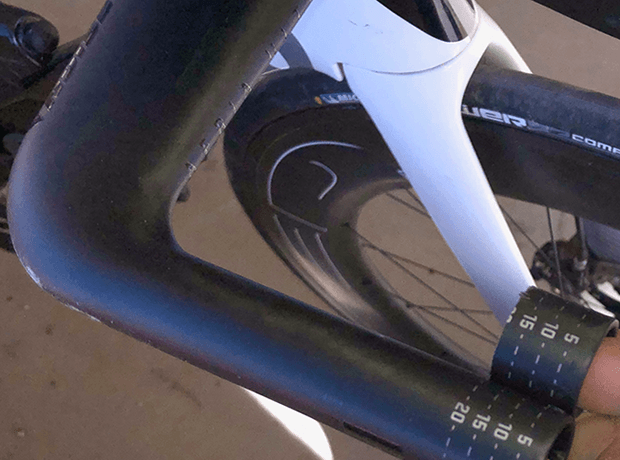
When I made bikes, I cut overlong bars down before I assembled them for sale to you all. This is just such a bar. It needs to be cut (the replacement bar is shorter than the original, but it still benefits from some chop-chop). My one complaint about Trek's Speed Concept was the pursuit position swept too forward. While the SC's pursuit bar couldn't be cut, the Aeria Ultimate's pursuit bar can. This one, on the P-Series, I cut all 20mm off of the end (in the pic above I'm holding what I cut off of one side next to the uncut side), and I’m going to ask PD if I can cut off yet another 10mm. Because it’s still longer than I want.
You might wonder whether there’s enough of a run of the inside diameter to cut off more than 20mm, and I don’t know. You’ll want to make sure you have room for the lever’s wedge mechanism. But this TRP doesn’t have a wedge. It goes over the outside diameter of the bar. So, I’d like to cut off more of the bar’s forward protrusion (if I can).
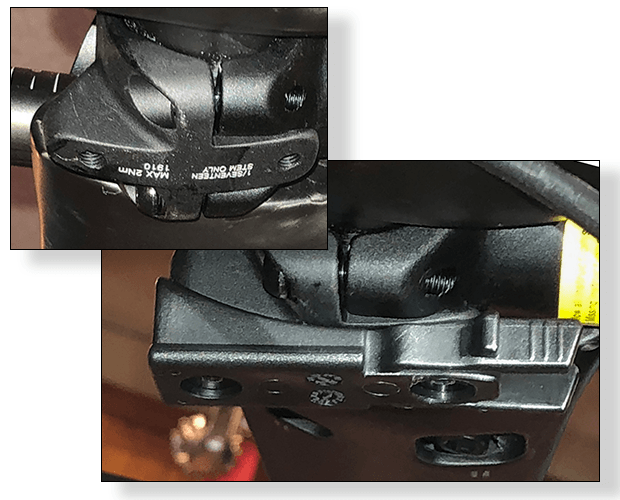
What I stuck on the Cervelo P-Series are 3 Profile Design products: the Aeria Ultimate, and the Aeria Hydration System; and one of PD's stems. There are 2 available stems: the Aeria Ultimate stem, and I didn’t choose that. Then there’s a new stem, it's called the Seventeen. Nothing special, except the faceplate. Lordy, I don’t know why more companies don’t utilize the faceplate to do fun things. Above is the underside of the faceplate, with a set of bolt holes, and then a pic of the bracket that accepts the hydration system. You just slide the hydration system onto this, and the play here is to buy the stem and the hydration system. The stem is so shielded by the hydration system (look at the pics here; can you see the stem?) it someone moots the value in the Aeria stem. The faceplate on the stem, and the hydration system that attaches to it, this is where the action is.
You can put this stem (and hydration system) on any bike, with any aerobar, as long as that bike doesn’t already have built in hydration. Which is to say, there’s some value in considering mortal bikes that take mortal stems, and then: Mount on your bike a hydration system made by a company that specializes in hydration systems!

Above is the build that Cervelo offers. This is the very same bike, before I changed parts. Nice bike! Here’s my final note on why I like Profile Design's hydration system on this bike: There’s a rubber piece just behind the stem on the P-Series, that’s designed to close everything up and provide a nice flow, perhaps aerodynamically, certainly to the eye. You can see it in the pic above. But when I work with this bike, the leading edges of this rubber piece tend to splay a bit, wider than the width of the stem just in front of it. The hydration system I’m featuring on this bike today flows over that rubber piece, and smooths things out.
The Profile Design stem I used had a -17° pitch (extension level with the horizon). I placed 30mm of headset spacers under the stem. Why? If you look at the hydration system, it’s pretty level now with the P-Series’s top tube storage. That’s what you get with that 30mm of spacers. I need some pad height anyway, so, I’m getting the first 30mm that way, and then another 10mm or so under the pads.
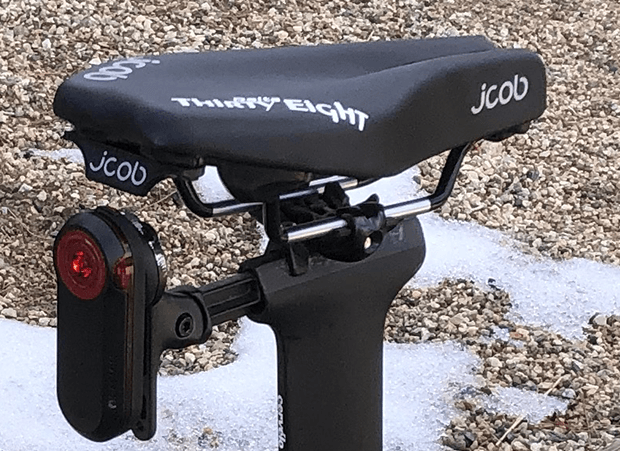
I’m a Speedplay guy, you all know that, and I’m a Shimano guy when I’m not (when riding MTB, for example). For road, I’ll remain a Speedplay guy as long as Wahoo treats that brand well. Wahoo Fitness recently bought Speedplay, and I don’t know what Wahoo has in mind. So, just like when Deckers bought HOKA, one always has to see how the acquiring company treats the brand. But for now, the Slowman build of this bike includes Speedplay.
I’ll be writing about new trends in saddles, and one trend is to come back a bit toward traditional widths on the fronts of tri saddles like the Prologo Dimension Tri T4.0 Cervelo specs on this bike). Look at what the top men and women were riding in Kona. Accordingly, I’m testing out this saddle, a JCOB 38. The “custom” saddle Frodeno used sure seems to be a Cobb 55 (now called a JCOB Type 5), and second-place Tim O’Donnell was certainly on that saddle. But if you keep looking down the top-15 you’ll see a lot of narrower noses (the 38 is 38mm wide to the 55mm wide saddle used by Kona's top 2 male finishers).
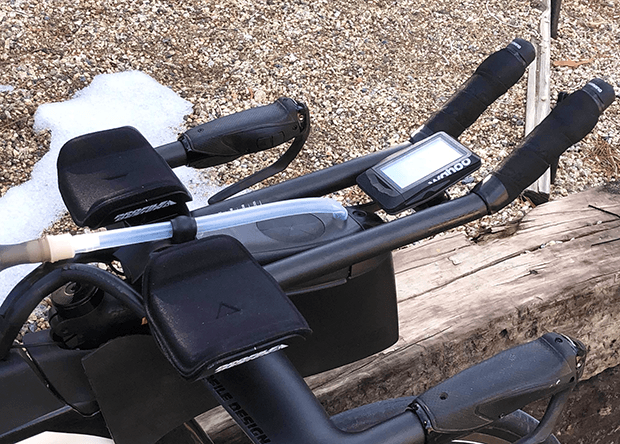
I didn’t change the shift or brake system because I’m bullish on electronic shifting. I’m not that particular about whose. I just think that internally routed bikes – aero road bikes or tri bikes – ought to be electronically shifted, unless the bike maker includes in his frame push-thru routing. By that I mean, you push cables our housting in one end, it comes out the other (without any fishing for the cable). Same for brake cables, whether hydro or mechanical. Slowman’s Law of internally routed frames: If your routing isn’t push-thru, your bike shouldn’t sell-thru. Of course no bike currently features this. But mine did, when I made bikes, and I’m going to keep pestering bike makers about this until they make life easier for us all.
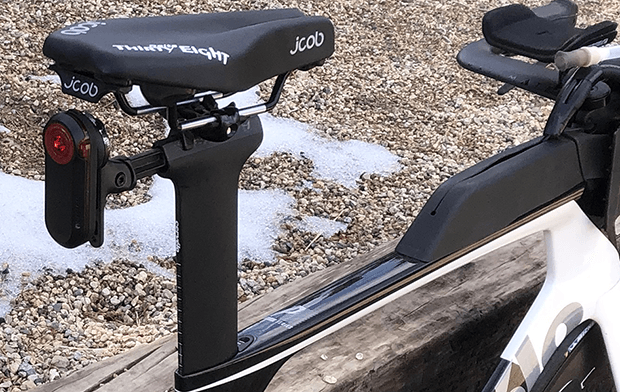
Finally, it occurred to me that I didn’t mount electronics on Slowman's build, so I did a little messing in my workshop and here’s the result. There’s a Wahoo ELEMNT head unit on the Aeria Ultimate, and on the back there’s a Varia Rear Radar. (Slowman doesn't ride on the road without his Varia.)
I hate behind the saddle bottles. I hate behind the saddle bottles. I hate behind the saddle bottles. If you don’t, fine. But I do. So, what to do with that rear bottle mount? It’s not that hard to make a Varia bracket that’s quite sturdy, mounting it on that behind-the-saddle bottle mount.
And that’s it! It’s one way to ride the P-Series. The original build, from the factory, has certainly got its virtues. But this one’s pretty nice.


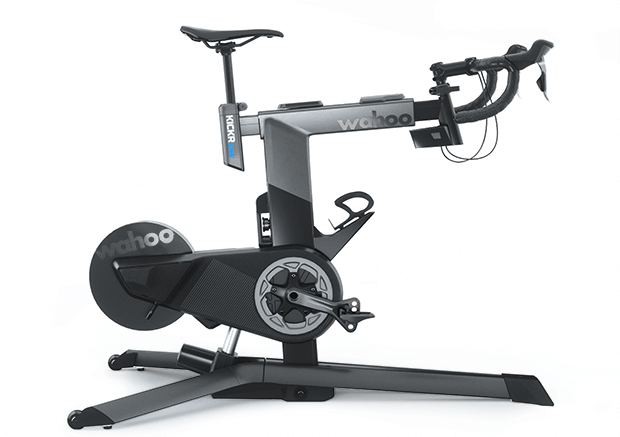
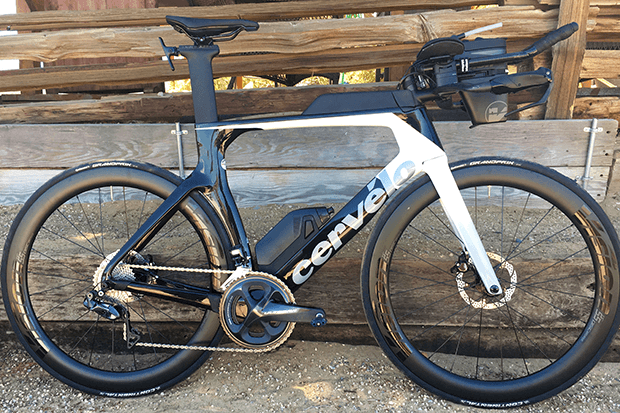
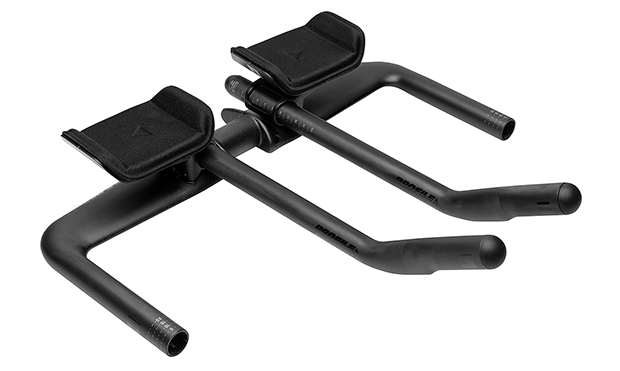
Start the discussion at slowtwitch.northend.network